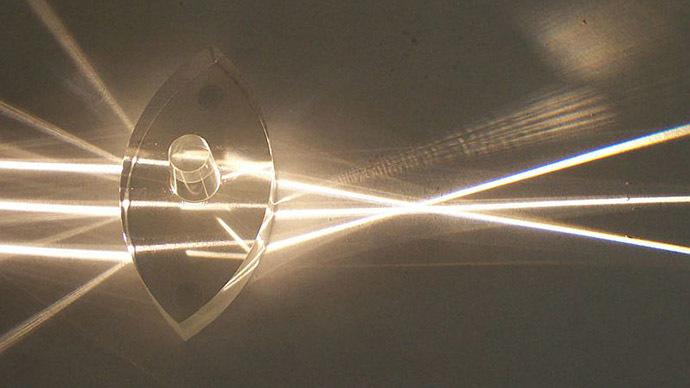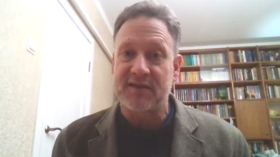Physicists manage to slow down light inside vacuum

Scientists have slowed down light inside a vacuum for the first time. By changing the shape of the individual particles in a light beam, they have now proved that light speed in free space is not a constant.
By building a liquid crystal device to alter the shape of individual photons, the physicists worked at the quantum level.
Light travels at an amazing -186,282 miles per second. Ordinarily, some barrier is needed to slow it down even by a tiny margin. Water and glass work best to illustrate this. But a team of researchers from the Glasgow and Heriot-Watt universities proved that the issue could be approached differently, by using individual photons instead of whole beams.
Not only did they manage to slow down light by using a special ‘mask,’ they managed to keep it moving slowly even after the device was no longer acting upon the photons.
Professor Miles Padgett, Dr Jacquiline Romero, Dr Daniel Giovannini and their teammates working from Glasgow’s laboratory demonstrated their finding by building a sort of ‘race track’ of two photons. They set out to demonstrate how a single photon’s quantum characteristics of both wave and particle can be used to build a special software-controlled device that could alter these functions at will.
The results of their study were published in the journal Science Express on January 23.
The dual racecourse culminated at a light sensor about three feet away, to measure the resulting speeds of two groups of photons. The first group was fired off through empty space unhindered, while the second traveled through the device shaping it into a curved beam. Unlike working with beams from the outset, shaping light in this way proved much more efficient. Individual particles offer greater flexibility.
The software-controlled ‘mask’ slowed down individual photons – an event the researchers compare to a cycling race. If before, we were inclined to measure the average speed of an entire group, we can now make more precise calculations by measuring the speed of a single racer. The group formation always makes it difficult to do that.
The first group of beams reached their destination quicker by a measly 0.001 percent, but that is already a massive implication for physics and the future prospects of working with light.

More amazing was that the light continued traveling slower after the mask was removed. Ordinarily, once a beam is no longer acted on by water or glass, it returns to normal speed. Not in this case.
As Padgett explains to the BBC, the mask “looks a little bit like a bull’s-eye target.”
"And that mask patterns the light beam, and we show that it's the patterning of the light beam that slows it down.”
It’s not clear to the layman how exactly the mask does what it does, “but once the pattern has been imposed – even now the light is no longer in the mask, it’s just the propagating in free space – the speed is still slow.”
This is all thanks to the photons being able to shape-shift into waves and particles, a quality called wave-particle duality. If you alter the shape of the wave, you create a slower, curvier photon.
"We've achieved this slowing effect with some subtle but widely-known optical principles. This finding shows unambiguously that the propagation of light can be slowed below the commonly accepted figure of 299,792,458 metres per second, even when travelling in air or vacuum,” co-author Romero explains in the University of Glasgow press release.
"Although we measure the effect for a single photon, it applies to bright light beams too. The effect is biggest when the lenses used to create the beam are large and when the distance over which the light is focused is small, meaning the effect only applies at short range.”
Padgett says the team are “confident” their observations are correct, and is excited for the implications this might have for physics.
"The results give us a new way to think about the properties of light and we're keen to continue exploring the potential of this discovery in future applications. We expect that the effect will be applicable to any wave theory, so a similar slowing could well be created in sound waves, for example," Padgett adds.












